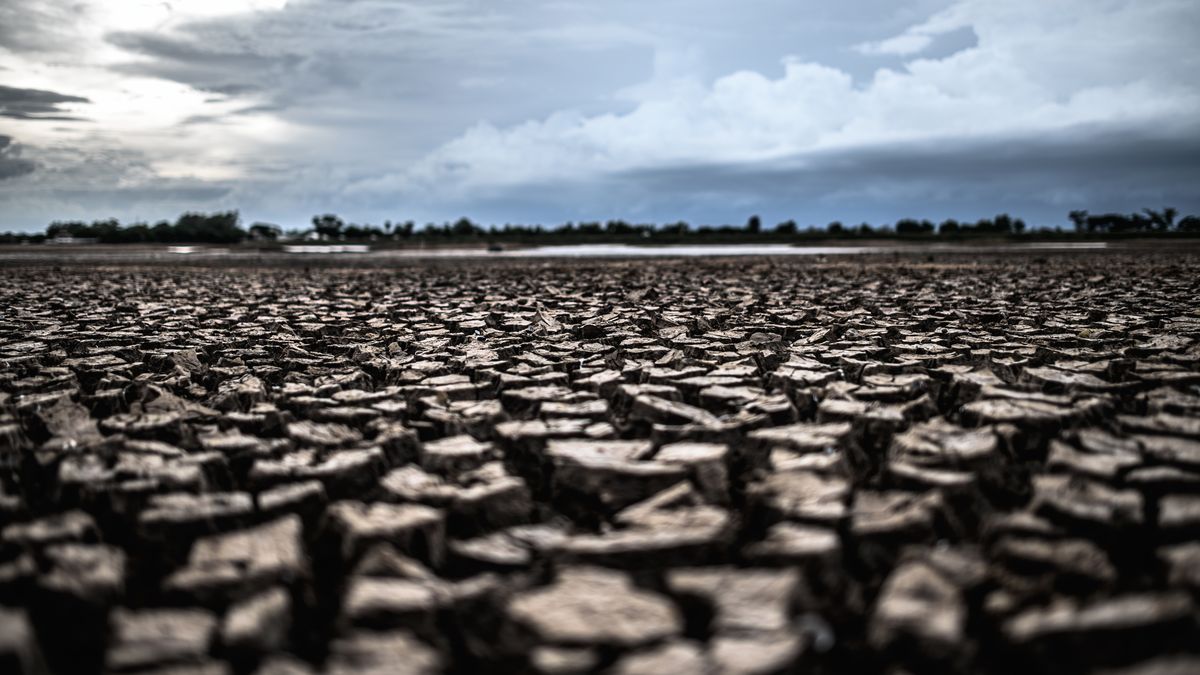The particularity of this drought is that it occurs together with the climatic phenomenon of “The girl” who was present three consecutive years. “It is a phenomenon that has existed for many centuries and is characterized by its climatic variability,” he explained to scope.com meteorologist and climate change specialist, Mario Bidegan.
This phenomenon has an irregular periodicity, between 2 to 7 years, and is called the El Niño/La Niña phase when sea temperatures in the tropical eastern Pacific tend to drop or rise 0.5°C above or below average temperatures. Unlike the El Niño phenomenon, La Niña generates rainfall below normal and is precisely what is suffering Uruguay.
What does climate change have to do with it?
The unusualness of the situation could lead one to believe that the climate change has a great role. However, Guadalupe Tiscornia, coordinator of the Agro-Climate Unit of the National Institute for Agricultural Research (INIA), assures that there have been this type of situations throughout history, although he does not rule out evaluating the phenomenon in the long term “to determine if it was a one-off situation or that it is indeed so, and if these phenomena they begin to occur more and more often”.
Although it is still ruled out that this specific situation is entirely the fault of climate change, specialists do not dismiss that what this phenomenon does is exacerbate climate events. “Climate change can be attributed to the increased frequency with which they are happening extreme eventsboth droughts and floods, phenomena that have been intensifying in the world and in the region”, established Puppo.
The meteorologist, for his part, points out that the increase in ocean temperatures is marked by climate change, which worsens the situation of drought. “There may be influences on the temperature side. Because what has been observed in recent decades is a general warming of all ocean watersincluding the South Atlantic”, he remarked.
The situation in the countryside and the good (but slow) responses of the government
The agricultural sector is, without a doubt, the most affected by the drought. On January 17, the government led by Luis Lacalle Pou decided to extend the agricultural emergency until the month of April.
“Since November we have been alerting the authorities that there were going to be problems due to the water deficiency that already existed at that time of the year and seeing the forecasts that had been announced,” explains the President of the Rural Federation and agronomist engineer, Martin Uría. The engineer points out that the government’s responses were good and that they responded to the needs of the producers.
However, there is a problem with bureaucracy and slow responses that do not match the urgency that the sector has. “When you enter into the operational, we enter into a bureaucratic system that slows down the speed of decision, in counterpoint to that need for quick solutions that we producers have” remarked Uría.
Faced with this, the importance of create structural plans and solutions. “You have to be prepared and have the solution, even if you are not going to use it and not have to run screaming when complicated situations arise,” says Tiscornia, INIA coordinator. “That makes the impacts much greater and the responses late,” she added.
The president of the Rural Federation believes it is important that the entire spectrum related to agricultural activity come together, with the entire political spectrum and try to generate a national plan to be able to deal with these phenomena that are becoming less and less unusual. First, he stressed the need to have stored water
“We must begin to think about how those countries where they really experience this problem think and had this irregularity in the rains as something normal and adapt our production system and our structure for this irregularity,” added Uría.
What can be done?
Faced with this question, the answers can be infinite and it depends on each part that makes up the agricultural sector. However, Uría expressed the need to start thinking about new irrigation possibilities and become technical in it.
In this sense, the possibility of implementing a structural project for construction of wells between Ministry of Livestock, Agriculture and Fisheries (MGAP)the Office of Planning and Budget (OPP), he Ministry of Environmentthe municipalities and the Bank of the Republic of Uruguay (BROU).
According to the professor of the Faculty of Agronomy, it would be important that cutwaters are also built respecting the management guidelines for these works. “In this way, not only sufficient quality water for the animals could be ensured, but also sufficient food by irrigating a small area that allows make the production system sustainablePuppo explained.
On the other hand, the specialist recommends “the implementation of lines of credit for the construction of dams (larger works) to irrigate crops, with amortization terms and interests that are in accordance with the production systems and their cycles”. However, the engineer clarifies that the cutwaters and dams are works to capture runoff water and currently, Uruguay captures less than 4% of runoff water while the The remaining 96% ends up contributing to the Atlantic Ocean.
Puppo established that Irrigation implementation in Uruguay is still very low – with the exception of rice that is 100% irrigated – despite the fact that its effectiveness has been proven in studies. This is due to several factors, including high investment and operating costs, lack of knowledge associated with the use of technology and irrigation management, and high energy costs.
Undoubtedly, according to the experts, the solutions have to be multiple and have to face different fronts in order to have, at least, a minimum predictability of what may happen in an uncertain future marked by increasingly extreme climatic phenomena.
Source: Ambito




